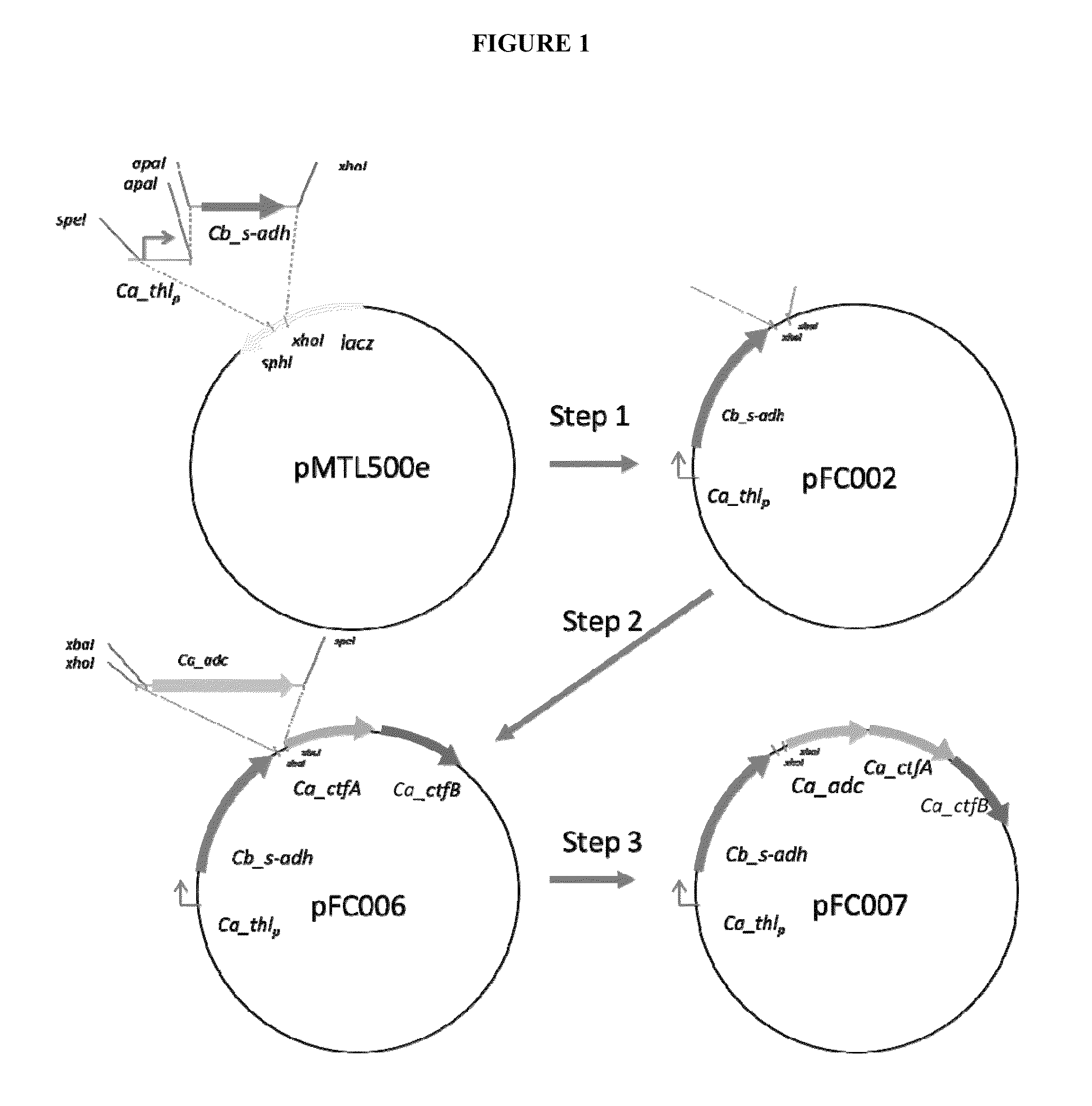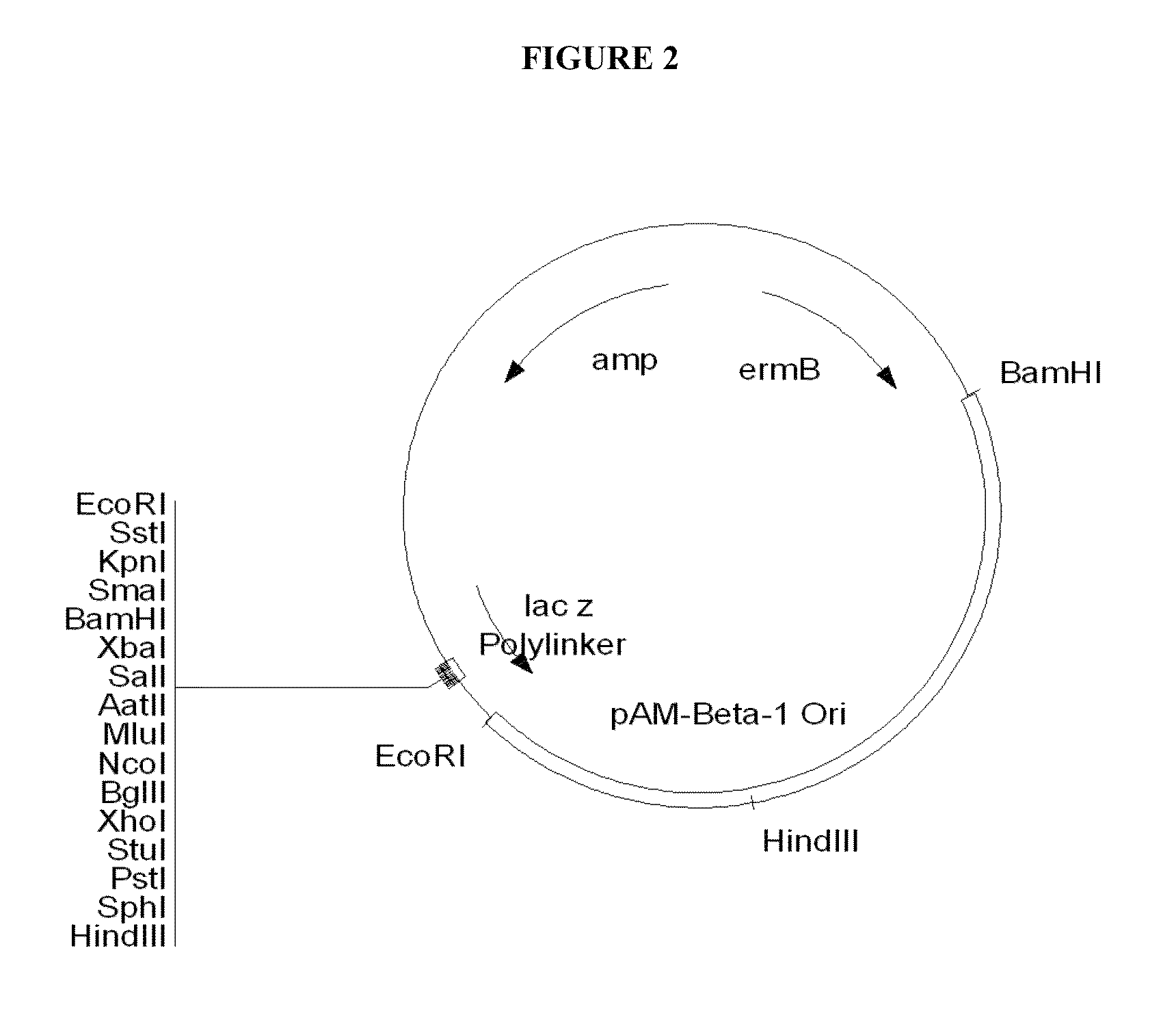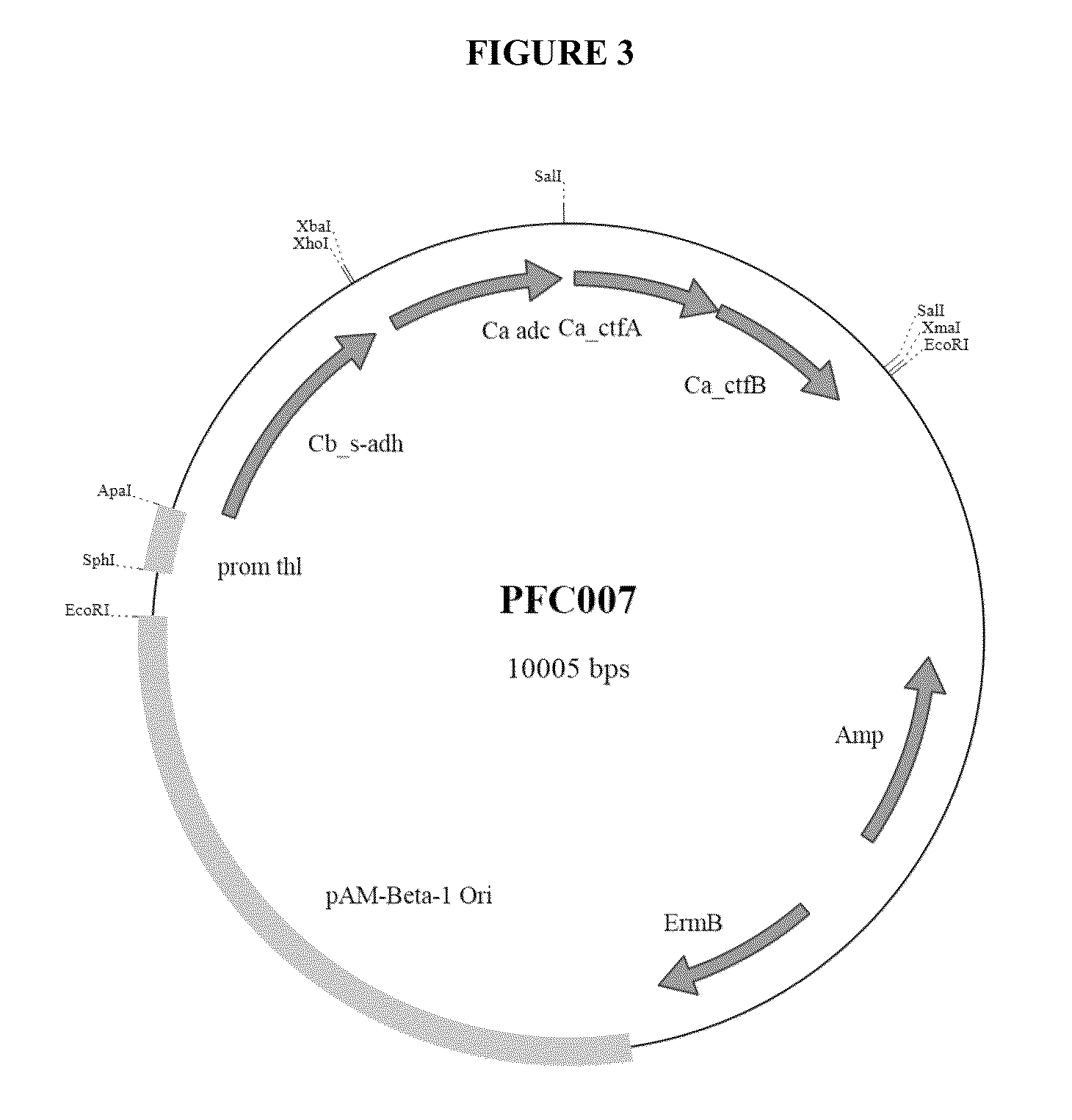Production of isopropanol by improved recombinant strains
a technology of recombinant strains and isopropanol, which is applied in the direction of lyase, transferase, bulk chemical production, etc., can solve the problems of not all strains of i>c. beijerinckii can be produced economically viable, and no longer use the method of isopropanol production in industrial us
- Summary
- Abstract
- Description
- Claims
- Application Information
AI Technical Summary
Benefits of technology
Problems solved by technology
Method used
Image
Examples
examples
Materials and Methods
Equipment and Materials
[0100]The kits used in the operations of molecular biology (construction of the plasmid vectors) are presented in Table 1.
[0101]
TABLE 1Kits and materials used in the operations of molecular biologyName of the kitUseSupplierRestriction enzymes: apaI, speI,Enzymatic digestion of plasmid DNAsNew EnglandsphI, xbaI and xhoIBiolabs (NEB)High Fidelity PCR Master Mix ™PCR amplificationRocheDreamTaq ™PCR amplificationFermentasOligonucleotides (Table 3)Primers for the PCR reactions, created byBaseClearthe inventorsAlkaline phosphatasedephosphorylation of the 5′ ends of theNew Englandlinearized vectors preventing self-ligationBiolabsT4 DNA ligaseligation of DNA fragmentNew EnglandBiolabs (NEB)GenJET ™ plasmid miniprepExtraction of plasmid DNA from cultures ofFermentasGenElute ™ Bacterial GenomicExtraction of genomic DNA from bacteriaSigma-AldrichDNA(Gram-positive and Gram-negative)Z-Competent ™E. coliProduction of chemocompetent bacteria E. coliZymo ...
PUM
| Property | Measurement | Unit |
|---|---|---|
| temperature | aaaaa | aaaaa |
| time | aaaaa | aaaaa |
| solvent properties | aaaaa | aaaaa |
Abstract
Description
Claims
Application Information
 Login to View More
Login to View More - R&D
- Intellectual Property
- Life Sciences
- Materials
- Tech Scout
- Unparalleled Data Quality
- Higher Quality Content
- 60% Fewer Hallucinations
Browse by: Latest US Patents, China's latest patents, Technical Efficacy Thesaurus, Application Domain, Technology Topic, Popular Technical Reports.
© 2025 PatSnap. All rights reserved.Legal|Privacy policy|Modern Slavery Act Transparency Statement|Sitemap|About US| Contact US: help@patsnap.com



